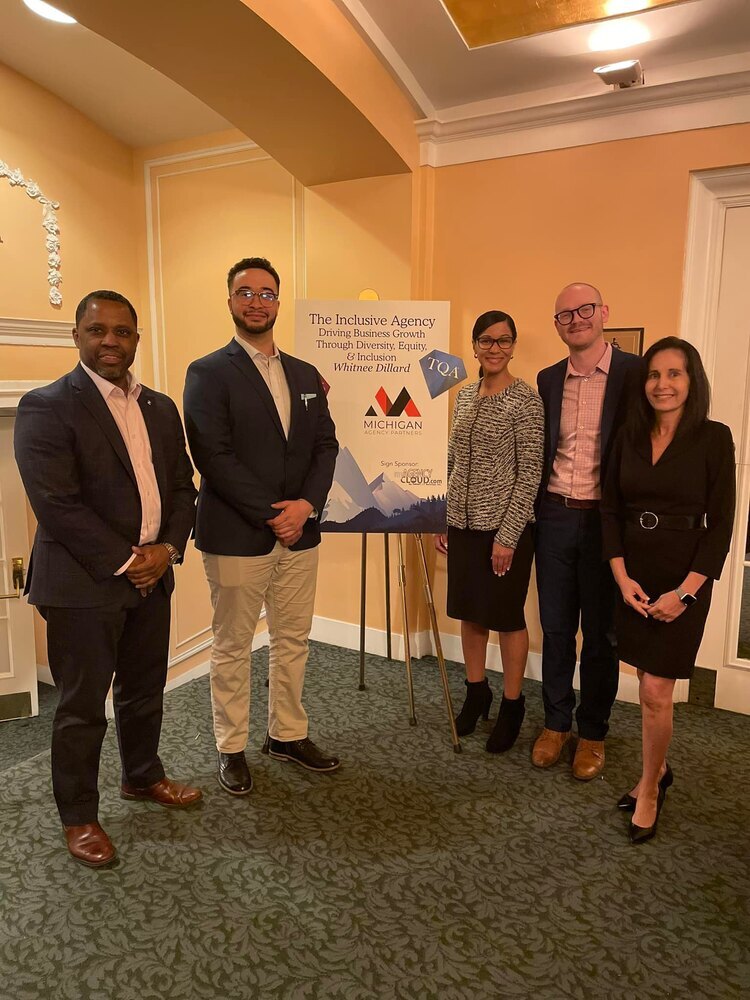
I’m a work in progress. While my agency places importance on creating a culture that promotes diversity, we continue to learn new ways to improve. While advocating for increased diversity in the insurance industry, I come across common excuses for why organizations aren’t placing an emphasis on having a diverse team:
1. “No other agencies are diverse so no one really notices. “
We are long past simply recognizing the business case for diversity. It’s better for your bottom line. Creating a diverse workforce will make you stand out from your competitors in a good way and show that you align with customers who also place importance on diversity. Creating a more diverse workforce isn’t only a value-added bonus for the next generation of workers, it is expected. This only increases your ability to innovate and attract a more diverse talent pool.
2. “We don’t know where to start.”
This is an honest approach. Looking outside of your typical talent pipeline takes time and investment. In order to attract diverse talent, you must first foster an environment that welcomes and appreciates people for their differences. You won’t find diverse talent if you are posting job opportunities in the same places where you have attracted talent that looks just like you.
3. “It’s so time consuming, expensive and challenging.”
The reason many businesses don’t succeed is that they are unwilling to make significant investments to adapt to changing times. And to see what customers really want and expect. Investing your precious time in your business is imperative to success.
4. “We can’t find qualified candidates. There are aren’t enough women or people of color in the insurance industry.”
Most insurance organizations are predominately white so it can be hard to get a diverse talent pool to apply. In order to be effective, you must modify your approach and find creative ways to recruit. There is a sea of diverse talent that may be outside your existing network. Make a concentrated effort in placing yourself where a more diverse talent pool congregates. And utilize that to make genuine connections.
5. “Our one employee is a bit of a racist, but he sells a lot so we have to keep him.”
This says your organization tolerates bad behavior if they think it will benefit their bottom line. One person is never singularly the reason for an organization’s success. No one is untouchable, especially when one toxic employee can bring down an entire organization.
6. “Our company already has a lot of women employees.”
Many organizations, mine included, predominately employ women. But the number of women in leadership and management positions is what we all need to strive for. Not to just employ women, or a diverse talent pool, but to value all contributions and place diverse candidates in positions of authority.
7. “We hire for quality, not for color.”
How do you define quality? Unless you have a clear, objective definition of quality, how do you know if you are picking the best candidate? Whoever is doing your recruiting can project their own biases upon the process or candidate in order to determine quality. When you say that you “don’t see color” or are “color-blind,” you may mean you are not prejudiced. But instead, you should strive to acknowledge differences and work to create a more equitable playing field.
8. “We have a qualified candidate in our pipeline already. It would be unfair not to select them.”
Candidates are most often selected through those who are known to those making the hiring decision. If their network is not diverse, they are searching a group of homogenous candidates. People usually know, work with, and socialize with others who are like them. Stepping outside of this circle is going to allow for more qualified candidates overall. That’s not to say hiring someone already in your network is a bad idea. But if your network isn’t already diverse, you aren’t aligned with your organizational goals.
9. “We hired a woman or person of color before and they failed.”
People who are not qualified for a specific position should not be promoted to that position. It sets them up for failure. All people who are new to a specific role need unique, customized solutions to ensure their success. Promotions without organizational support are a recipe for conflict. It is also important to note that one individual does not represent an entire group of people. Sometimes leaders hold members of a diverse class to a higher standard and then diminish the potential of the entire group when one individual’s performance doesn’t meet their standard.
It is important as a leader to be able to combat these excuses and be able to articulately explain why they don’t hold up. But each time we fill positions within our agencies, it is important that we strive to create and sustain a diverse team.
We are going to make mistakes along the way. But to behave like we have in the past isn’t going to cut it in the future. To make progress on diversity in any team, White leaders must be humble, admit what we don’t know, and listen as we learn to evolve.
